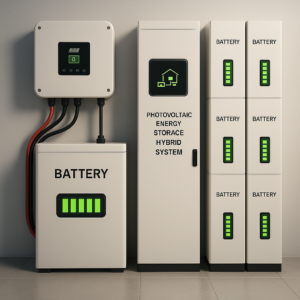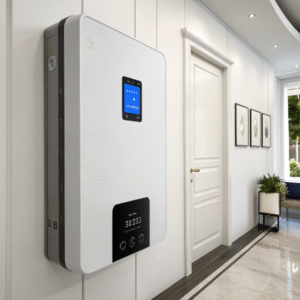What is Needed for a Hybrid Solar System?
by
What is Needed for a Hybrid Solar System?
Want to power your home with solar energy while staying connected to the grid? A hybrid solar system gives you the best of both worlds - solar independence with grid backup.
A complete hybrid solar system requires solar panels, hybrid inverter, battery bank, charge controller, monitoring system, and proper wiring. The hybrid inverter is the key component that manages both solar power and grid connection simultaneously.
Transition Paragraph:
Now that we know the basic components, let's explore some common questions about hybrid solar systems.
Which is Better, Hybrid or On-Grid Solar System?
Choosing between hybrid and traditional grid-tied systems depends on your power needs and local electricity conditions.
Hybrid systems outperform grid-tied systems when power outages are frequent or electricity rates vary significantly. They provide battery backup and energy independence, while grid-tied systems are simpler and cheaper for areas with reliable power.
Detailed Comparison: Hybrid vs Grid-Tied
| Feature | Hybrid System | Grid-Tied System |
|---|---|---|
| Battery Backup | Yes | No |
| Power During Outages | Yes | No |
| Electricity Bill Savings | 70-90% | 40-60% |
| Initial Cost | Higher ($15,000-$25,000) | Lower ($10,000-$15,000) |
| Maintenance | More complex | Simple |
| Best For | Areas with outages, time-of-use rates | Reliable grid areas |
Key considerations:
- Frequency of power outages in your area
- Electricity rate structure (flat vs time-of-use)
- Budget for initial installation
- Desire for energy independence
- Available solar incentives
Which is Better, Grid-Tie or Hybrid Solar System?
The choice between grid-tie and hybrid comes down to your specific energy needs and local utility policies.
Grid-tie systems are better for simple installations where net metering is available, while hybrid systems excel when backup power is needed or net metering isn't favorable. Hybrids can store excess energy instead of selling it back.
Decision Factors Between Grid-Tie and Hybrid
| Factor | Grid-Tie Wins When... | Hybrid Wins When... |
|---|---|---|
| Power Reliability | Grid is stable | Outages are common |
| Net Metering | Full retail credit available | Poor/no net metering |
| Electricity Rates | Flat rates | Time-of-use rates |
| Budget | Limited funds | Can afford premium |
| Energy Goals | Simple savings | Maximum independence |
Technical advantages:
- Hybrids avoid export limits
- Better load shifting capability
- More flexible energy management
- Future-proof for battery additions
- Works during grid failures
How Do You Size a Hybrid Solar System?
Proper sizing ensures your hybrid system meets your energy needs without overspending on unnecessary capacity.
Size a hybrid system by calculating your daily kWh usage, determining solar panel capacity (typically 110-150% of usage), selecting battery storage (2-3 days of autonomy), and choosing an inverter that handles both solar and battery inputs.
Hybrid Solar System Sizing Guide
| Component | Calculation Method | Example for 30kWh/day Home |
|---|---|---|
| Solar Panels | Daily usage ÷ peak sun hours × 1.3 | 30kWh ÷ 4h × 1.3 = 9.75kW |
| Battery Bank | Daily usage × days autonomy ÷ DoD | 30kWh × 2 ÷ 0.8 = 75kWh |
| Inverter | Match to peak load + 25% buffer | 10kW continuous load → 12.5kW inverter |
| Charge Controller | Panel wattage ÷ battery voltage | 9750W ÷ 48V = 203A → 210A MPPT |
Critical sizing tips:
- Analyze 12 months of utility bills
- Consider future energy needs
- Account for seasonal variations
- Leave room for system expansion
- Consult local solar professionals
Conclusion
A properly designed hybrid solar system requires careful component selection and sizing. While more complex than grid-tied systems, hybrids offer superior energy independence and reliability, especially in areas with unstable grids or favorable battery economics.
You may also be interested in:



